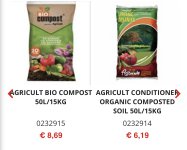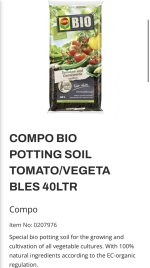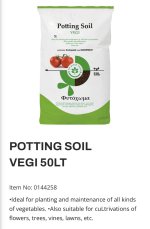I mostly make up my own mixes for pots, but I tend to use the commercial stuff for starting seed just because it is seed free and I get no weeds, top soil with a little compost is good, seeds don't need a lot of food to germinate.
Stuff I add that comes free (except for the work).
Leaf mould. Has almost no nutrient in it, its benefit is in water retention and drainage, if you put leaf mould in a pot and add water until it comes out at the bottom it will hold more of the water than anything else, but the water will also stop coming out at the bottom before anything else.
Sharp sand. Horticultural sand is expensive, but it is basically washed sharp sand. Sometimes it can be mined where there is salt or brackish water, so I cut the top off the bag and wait until it rains and fills the bag up, then make holes in the bottom to drain it (Assuming it will rain again

). It helps drainage to a degree, but it also promotes root growth, I go heavy on it for cuttings.
Wood ash. Has potash in it, in the old days gunpowder was made using potash washed out of wood ash, great for flowering.
Clay and burnt clay. I have heavy clay soil. When I have raked out a lot of dry lumps I put them through the sieve and then put the larger stuff in the incinerator when I have a fire. It makes a sort of coarse terracotta which is great for drainage, much lighter than sand. The finer stuff is mostly clay that has knocked off the lumps, people curse clay, but those tiny particles get water around them that holds nutrients, like most things, it is good in moderation.
Organic material, mostly hedge cuttings and what pulls out of the bottom of the hedge, that I don't want to just add to the compost. I put it through the mower then sieve it, and the small stuff goes in an old compost bag turned inside out so it is black. At that stage it is usually pretty dry, so I add water with half strength tomato feed and stand it in the sun, By next year it will be a lovely black compost with the occasional wood chip. The bigger stuff goes straight on the garden as mulch.
Top soil, a bit of sieved top soil gives it weight and bulk. If I am making something up I usually start with that and all the soil from the pots where things have failed.
Manure, well rotted. This is the main source for nitrogen, be careful the people you get it from are not using herbicides on their hay, some grass herbicides are deemed 'safe' because they go straight through the animal. That means they are in the manure still and will kill anything but grass in your garden.
My own compost, anything I have composted, but the better it has composted the less weed seed there will be in it, stuff I am less sure about I will put direct onto the garden, places like under the runner beans, or mulch where it will get hoed.






